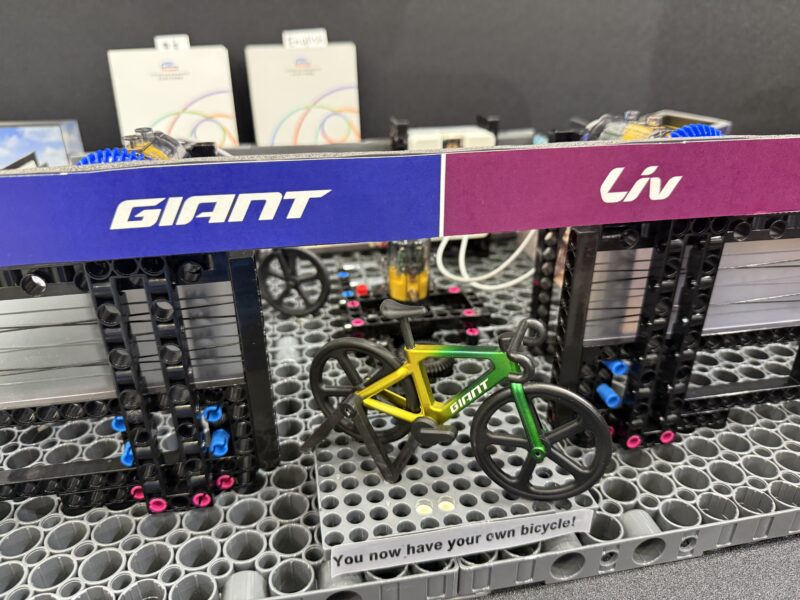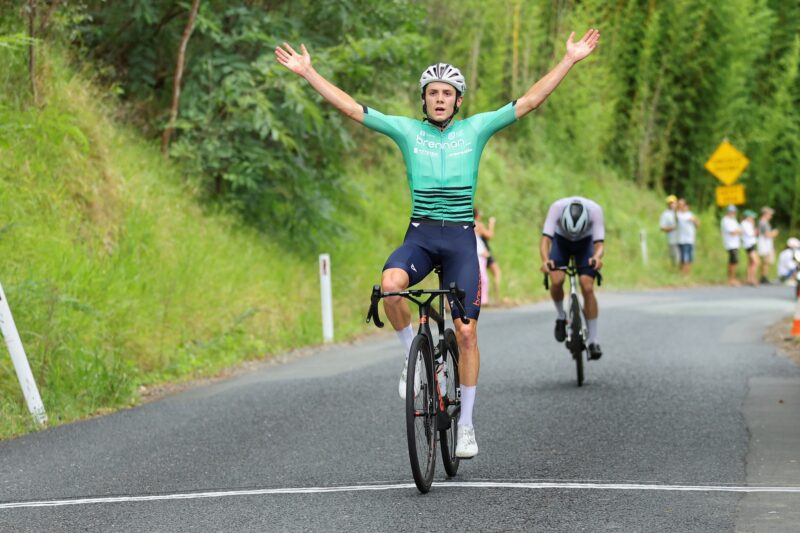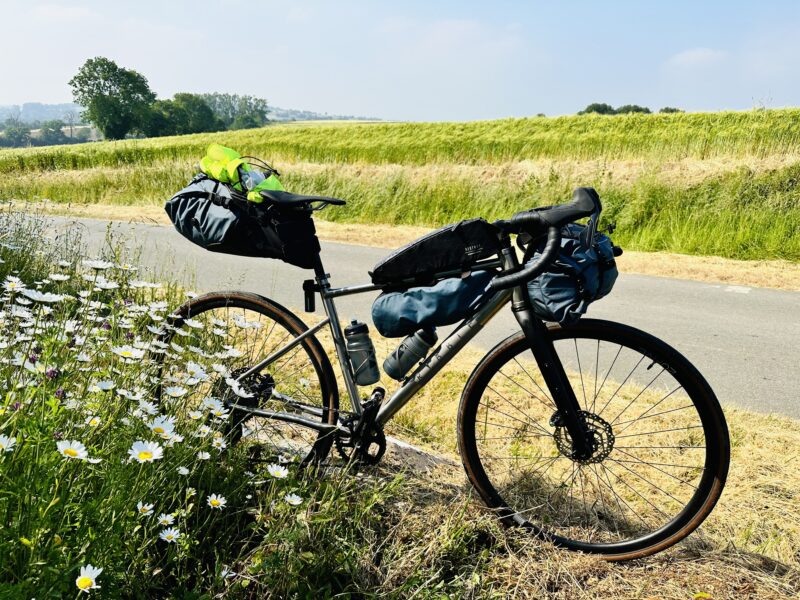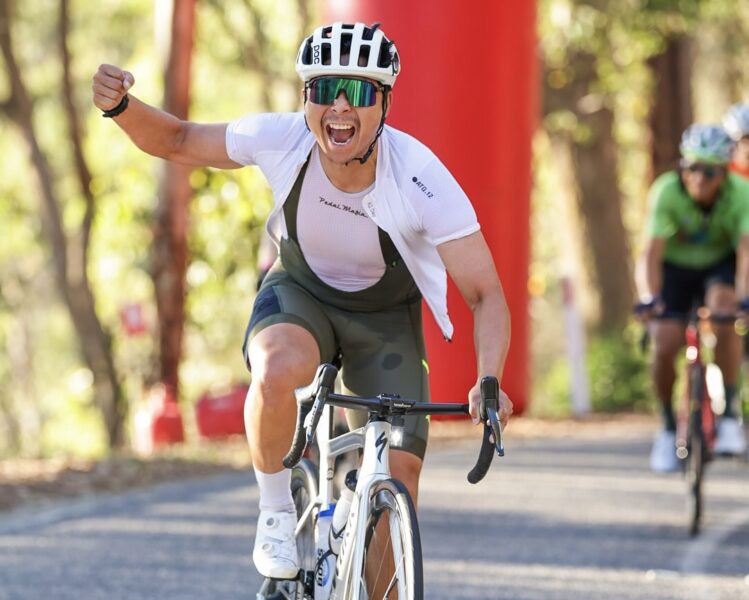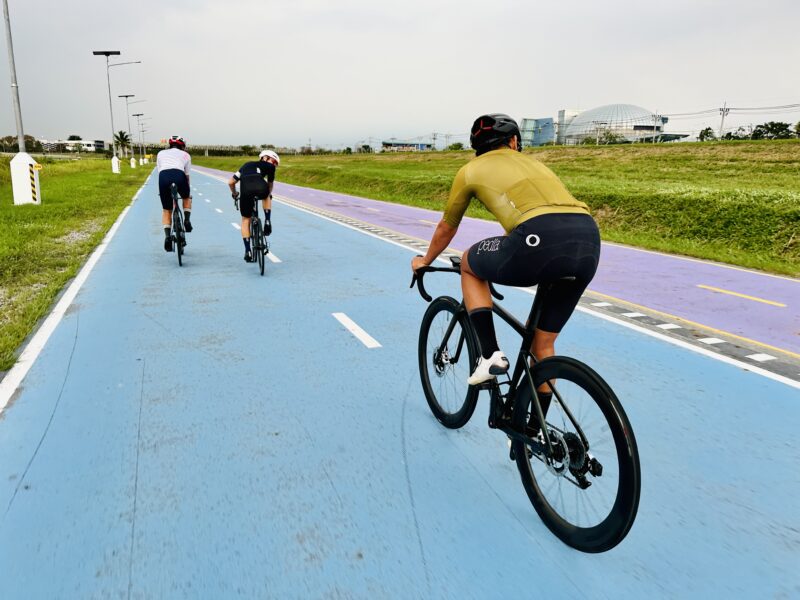It’s Back! Ride On Magazine Relaunched At The Tour Down Under

Pro rider Felicity Wilson-Haffenden with the new Ride On Magazine. Image: Nat Bromhead

More On The History Of Ride On Magazine by Former Editor Simon Vincett
The history of Ride On is inextricably linked with the history of its publisher, Bicycle Network. The magazine, and the plucky newsletter that preceded it, has been a vital public face of the organisation, since the commencement of the Bicycle Institute of Victoria (BIV) in 1975.
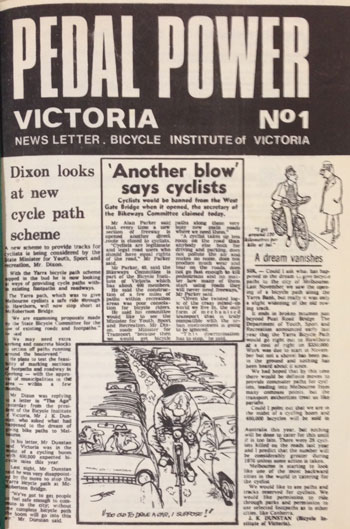
The newsletter Pedal Power no1 was presented at the first BIV Annual General Meeting in April 1976. It was 20 foolscap folio pages of strident advocacy for the benefits of bicycling and the rights of riders.
This was a time when “no separate bike paths are planned to run parallel with the new freeways” and “a high priority must be given to saving what remains of Melbourne’s creeks and river valleys…for transportation such as walking and bicycling”. There was much campaigning to be done by the fledgling BIV and the membership had to be grown and kept informed. Hence, an item in the schedule of the Annual General Meeting was the Secretary’s Report that included an “outline of the need to establish a regular magazine”.
By Pedal Power no5 in February 1978 a network of bicycling organisations was forming with the listing of the Bicycle Institute of NSW, the Bicycle Institute of Queensland, the Cyclists Protection Association of South Australia, Pedal Power ACT, Pedal Power Tasmania and the Newcastle Cycleways Movement. This issue’s 20 pages focused on the energy efficiency of bike riding and featured very early ebikes, a subject that has kept Ride On very busy for the past decade.
In Pedal Power no6 in March 1978 BIV announced “Recognition at last” with the news that the Victorian government “recognised the bicycle as a significant mode of transport”. It also announced, explained and celebrated the Geelong Bikeplan, a pioneering development of bike riding based on “engineering, education, enforcement and encouragement”.
But by November 1978 the overworked volunteer office-holders of BIV were showing signs of fatigue. Pedal Power reduced to a smaller format (approximately A5 size) and, while it still had plenty to report from the prodigious campaigning efforts, calls for more people to take up crucial roles were frequent.
In 1981, John Barret answered the call and took over editorship for the next two years, but produced just six issues (of A4 size) of between 20 and 30 pages. The still-young organisation was looking shakey and its hard-won influence threatened to evaporate. Alan Parker, founding secretary of BIV, reported later that the government “was on the point of downgrading the State Bicycle Committee”, which would result in a slowing of development for bikes in Victoria.
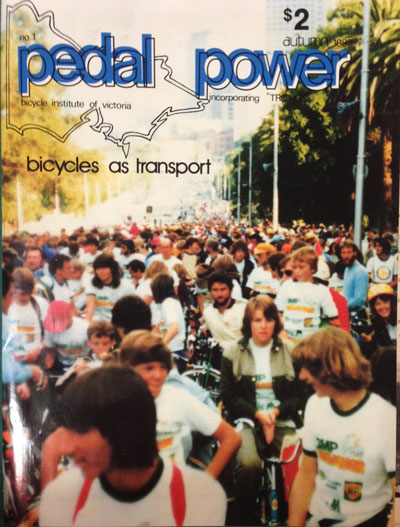 Then in 1983, for four issues, the newsletter became a magazine, with a colour cover and 34 and 50 pages. This was under a new editor, Harry Barber, who was later to be General Manager and Chief Executive Officer of the organisation for 20 years. Incoming President (and founding secretary), Alan Parker, thanked Barber for this significant act of image improvement, saying he “made the BIV look a most credible organisation” at this critical time.
Then in 1983, for four issues, the newsletter became a magazine, with a colour cover and 34 and 50 pages. This was under a new editor, Harry Barber, who was later to be General Manager and Chief Executive Officer of the organisation for 20 years. Incoming President (and founding secretary), Alan Parker, thanked Barber for this significant act of image improvement, saying he “made the BIV look a most credible organisation” at this critical time.
By 1984 Pedal Power was back to a black and white foolscap format but was locked into a regular cycle of six, 30-plus-page issues a year under the editorship of John Harland, who guided the helm until May 1986.
In Feb 1987 the newsletter became a magazine Bicycle Victoria—the name by which the organisation came to be known for the next 20 years—with a two-colour cover. John Harland was back in the editor’s role from April 1988 and by 1989, the magazine had a full-colour cover and the content regularly spread to more than 40 pages. From 1989 it was called simply BV.
In 1992 the name became BV News and the content became newsletter items for the swelling membership of the organisation. Its production became a task for Bicycle Victoria staff busy with multiple roles, and it varied in extent from a low of 12 pages to 40 pages.
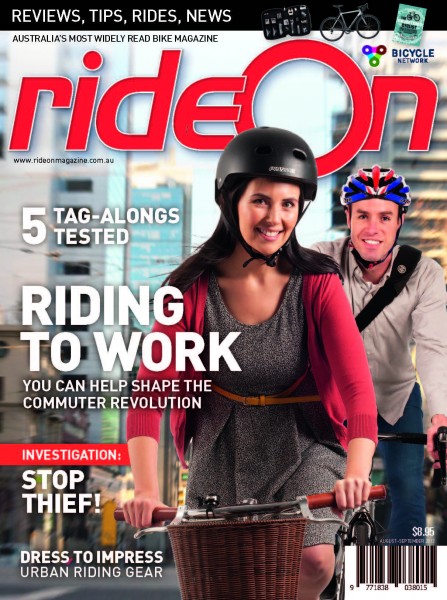 Under Editor Ben Zipper, BV News was transformed into Ride On in June 2004, with the intention of selling the magazine on newsstands around the country as well as inspiring Bicycle Victoria members to keep pedalling. Though BV News had been colour throughout, Ride On had professional magazine design, was published regularly six times a year changing up its content with health advice, bike maintenance, places to ride, bike news and feature articles. Over the next six years the magazine grew from 40 pages to its current 84 pages.
Under Editor Ben Zipper, BV News was transformed into Ride On in June 2004, with the intention of selling the magazine on newsstands around the country as well as inspiring Bicycle Victoria members to keep pedalling. Though BV News had been colour throughout, Ride On had professional magazine design, was published regularly six times a year changing up its content with health advice, bike maintenance, places to ride, bike news and feature articles. Over the next six years the magazine grew from 40 pages to its current 84 pages.
Over the decade since its 2004 beginning, Ride On’s readership has grown strongly despite difficult conditions in the magazine publishing market. In fact Ride On is now the only magazine in Australia addressing the interests of the mainstream, everyday-cyclist audience.
The readership grew to 60,000 readers per issue of the hard-copy magazine and 60,000 visitors per month to the Ride On website.
Driving reader popularity are Ride On’s rigorous reviews of bikes and equipment, authoritative advice on riding craft and road rules, and original investigations into the issues that matter for bike riders. Ride On is always there with expert coverage of the perennially compelling topics, such as helmet laws, swooping magpies, sharing the roads and paths, all-weather riding, road rules, bike lights, fancy new bikes, the Tour de France and more and more and more new products.

Other than reviews, the most popular articles are destination features such as ‘Australia’s Top 50 riding experiences’ and ‘World’s Top 50 riding experiences’.
Ride On’s extensive experience has been collected in the books, the Bike Bible and the Little Bike Bible, and in the Bike Riding in Victoria maps. Our authority has been recognised in collaborations with RMIT university and syndication by publications such as Choice, The Age and Royal Auto, the RACV magazine.
Our articles are born of real-world riding experience and original research to get to the heart of the matter. From the vast resource of nearly 50,000 Bicycle Network members we draw real riders as subjects and inspiration for our articles. Our belonging to Bicycle Network provides access to the influencers of bike riding development in Australia and overseas.
If you ever thought “It’s all been said before” you’re pretty much right—a look over the decades of publication show repeat coverage of areas of concern to bike riders. But that just shows that the work is still there to be done. For instance, it was in Pedal Power no2, in December 1976, that BIV was arguing for a 40km/h speed limit in residential streets, a call Ride On took up again in 2014.

It was in Pedal Power no4, in July 1977, that BIV first explained its behaviour-change missions, with a 24-page special issue covering bike education in schools and for adults, and a program of events and awareness activities as part of a Bike Week in Melbourne. These missions are now pursued as the programs, Ride2School and Ride2Work.
Then in February 1978, in Pedal Power no5, appeared coverage of some early ebikes, a subject that keeps Ride On very busy now, providing regular reviews of new models and technical developments.
However, Ride On works hard to provide a unique, up-to-date take on the world of bike riding through first-hand investigations and original research. Our annual Lights test, with its on-street testing by a panel of judges, and our Locks test, in which a comprehensive range of new locks are tested to destruction, are internationally recognised, prompting submissions from around the world.
Neither do we stay in the office when striving to cover issues that matter to bike riders. For our much-discussed ‘An ear on the traffic’ investigation, we took to the streets with a decibel meter and a synthetic ear to measure how much traffic noise is heard by a rider with earphones compared to what is heard by a car driver. To determine the risks of traffic-light timings for bike riders in ‘Stay or go’, we took real-world timings, made calculations for riders of differing speeds and provided guidance on appropriate defensive riding.
Taking a bike-rider perspective, we calculated the cost benefits of a lifestyle fully utilising the bicycle for transport. The result was ‘You’re in the money’ with its demonstration that bike riding has the potential to make you a millionaire. This is another article that continues to be linked and discussed.
Since beginning to publish online in April 2011, Ride On has more than doubled its audience, nearly half of which is outside Australia. Visitors from the US are approximately a quarter of the online readership, followed by visitors from the UK and then a wide variety of other countries. The annul Lights test, for instance is more popular in the northern hemisphere in their winter and the southern hemisphere in our winter.
The comments function of the Ride On website provides a helpful measure of the effectiveness of content. The stories most commented on are the helmet debate, ‘An ear on the traffic’, ‘Double take on the right-hand turn’, the regular ebike comparative review, the annual Locks test and ‘Bike queuing Dutch style’.
To keep the dialogue going via comments, the Ride On eMag newsletter is delivered monthly to subscribers, providing links to the latest posts and to articles on seasonal and topical issues. Sign up for the newsletter is found on the homepage of www.rideonmagazine.com.au.
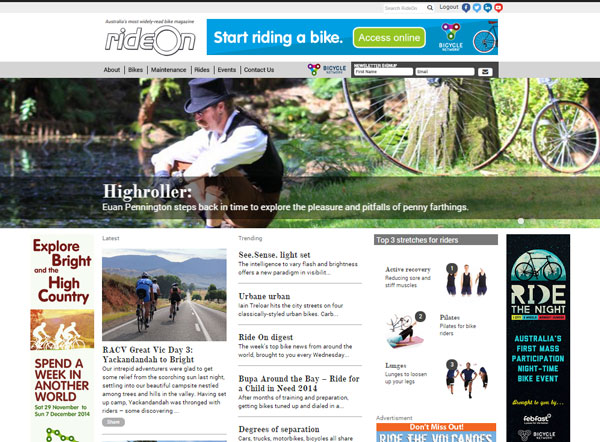 Ride On content is editorially independent, but is supported financially by members of Bicycle Network. If you enjoy our articles and want to support the future publication of high-quality content, please consider helping out by becoming a member.
Ride On content is editorially independent, but is supported financially by members of Bicycle Network. If you enjoy our articles and want to support the future publication of high-quality content, please consider helping out by becoming a member.


